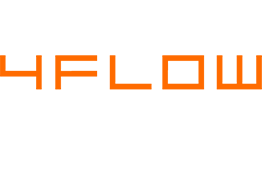SAP Process Integration
Filter By
Browse By
- SAP Analytics and AI
- SAP Application Development and Integration
- All SAP Application Development and Integration
- SAP ABAP
- SAP ABAP Development Tools
- SAP ABAP Test Cockpit
- SAP API Management
- SAP BAPI
- SAP Basis
- SAP BRF
- SAP Business Application Studio
- SAP CMS
- SAP Design Studio
- SAP Development Tools
- SAP DevOps
- SAP EAI
- SAP EDI
- SAP Extension Suite
- SAP Fiori
- SAP Fiori Elements
- SAP Integration Suite
- SAP Low Code Application Development
- SAP Low Code Automation
- SAP Netweaver
- SAP Release Management
- SAP UI5
- SAP Web Application Server
- SAP Web IDE
- SAP Business Process Management
- SAP Center of Excellence
- SAP CIO
- SAP Customer Experience
- SAP Data and Data Management
- All SAP Data and Data Management
- SAP BW
- SAP BW/4HANA
- SAP Crystal Reporting
- SAP Data Archiving
- SAP Data Center
- SAP Data Governance
- SAP Data Integration
- SAP Data Migration
- SAP Data Quality
- SAP Data Services
- SAP Data Strategy
- SAP Data Visualization
- SAP Data Warehouse Cloud
- SAP DMS
- SAP Document Control
- SAP EIM
- SAP ETL
- SAP ETL Tools
- SAP HANA
- SAP HANA Administration
- SAP HANA Deployment Infrastructure
- SAP HANA Studio
- SAP Master Data
- SAP Master Data Governance
- SAP MDM
- SAP Enterprise Architect
- SAP Enterprise Asset Management
- SAP ERP
- SAP Finance
- All SAP Finance
- SAP Accounting
- SAP AR AP
- SAP Asset Accounting
- SAP Billing Systems
- SAP BPC
- SAP BRIM
- SAP Cash Management
- SAP Central Finance
- SAP Controlling
- SAP COPA
- SAP Cost Center Accounting
- SAP e-invoicing
- SAP FICO
- SAP Finance Automation
- SAP Financial Closing Cockpit
- SAP Financial Consolidation
- SAP Financial Planning
- SAP FX Risk
- SAP General Ledger
- SAP Global Tax Management
- SAP Hyperion
- SAP Order to Cash
- SAP Payment Processing
- SAP Profitability Analysis
- SAP Rebate Management
- SAP S/4HANA Finance
- SAP Universal Journal
- SAP Governance Risk and Compliance
- SAP Human Capital Management
- SAP Intelligent Technologies
- SAP Platform and Technology
- All SAP Platform and Technology
- SAP Business Technology Platform
- SAP Cloud Connector
- SAP Cloud Integration Platform
- SAP Cloud Migration
- SAP Cloud Platform
- SAP Cloud Providers
- SAP Cloud Strategy
- SAP Container Platform
- SAP Digital Asset Management
- SAP Digital Integration Hub
- SAP Digital Signature
- SAP HANA Enterprise Cloud
- SAP HEC
- SAP Hyperscalers
- SAP Infrastructure
- SAP Messaging
- SAP Smart Forms
- SAP Quality and Testing
- SAP Security
- SAP Spend Management
- SAP Supply Chain Management
- All SAP Supply Chain Management
- SAP APO
- SAP Asset Management
- SAP Business Network
- SAP Digital Manufacturing Cloud
- SAP Digital Twin
- SAP EWM
- SAP IBP
- SAP Inventory Management
- SAP Label Printing
- SAP Logistics
- SAP Manufacturing
- SAP Manufacturing Automation
- SAP MES
- SAP MII
- SAP MM
- SAP MRO
- SAP MRP
- SAP Order Management
- SAP Plant Maintenance
- SAP PLM
- SAP Production Planning
- SAP S&OP
- SAP SD
- SAP SPM
- SAP Supply Chain Planning
- SAP Track and Trace
- SAP Transportation Management
- SAP System Administration
Role of Process Integration in Creating the Connected Enterprise
As organizations grow, so does the complexity of business processes that help organizations function efficiently. Organizations today want to embrace agility and resiliency to mitigate business uncertainties. To achieve these goals, they need to build end-to-end visibility and flows. Integration of siloed business processes is critical for building end-to-end views with the enterprise. This is where process integration comes into play. Process integration capabilities allow organizations to weave multiple processes into one flow, often tracking how information flows within enterprise systems. This integration, hence, provides a cohesive, end-to-end view of the business.
Role of Process Integration in Creating the Connected Enterprise
As organizations grow, so does the complexity of business processes that help organizations function efficiently. Organizations today want to embrace agility and resiliency to mitigate business uncertainties. To achieve these goals, they need to build end-to-end visibility and flows. Integration of siloed business processes is critical for building end-to-end views with the enterprise. This is where process integration comes into play. Process integration capabilities allow organizations to weave multiple processes into one flow, often tracking how information flows within enterprise systems. This integration, hence, provides a cohesive, end-to-end view of the business.
What Is Process Integration?
Point systems and applications within organizations have grown exponentially in the last few years. This has built fragmented business process data across multiple systems within organizations. Business process integration (BPI) enables organizations to weave their people, data, and applications in one cohesive view. Not all integrations are that comprehensive. Process integration can be simple as well, known as native integration, where the integration focuses on data flow, or it can be comprehensive like third-party integrations. SAPinsider Process Automation SOM research report covers this aspect in detail.
Key Considerations for SAPinsiders
Map and understand process interdependencies. While the focus is on integrating processes and increasing end-to-end efficiency, it is critical to understand process interdependencies. Comprehensive business process mapping on key processes needs to occur simultaneously to understand interdependencies. Build swim-lane-style process maps that clearly illustrate how each process interacts with the other. Leverage best-in-class process mapping and design methodologies like SIPOC diagrams.
Use process integration to facilitate process automation. It is important to understand what the drivers are for inefficiencies and errors in a process. Methodologies like Lean Six Sigma and Six Sigma can be useful to perform the analysis. Some of the most widely used and effective root cause analysis methods are Failure Mode and Effects Analysis (FMEA), Scatter Plot diagram, Fishbone diagrams, and Pareto charts. These need to be developed in conjunction with process maps.
Formulate a process visibility strategy. Process visibility remains a key aspect of any process transformation. However, it is important to realistically pre-define what is the desired level of process visibility and evaluate the feasibility of attaining that level of visibility.
Embrace intelligent automation. Technology today allows us to take process automation beyond merely automating manual, non-value-adding tasks. Process automation enabled by artificial intelligence and machine learning allows you to further stretch the boundaries of process enhancement and move towards building a truly intelligent enterprise of the future.
5 results
-

How Cloud Integration Platforms Can Help SAP Users Improve Transparency and Communication
Reading time: 1 mins
Today, many companies feel that traditional ways of managing SAP systems require a lot of manual handling and are not efficient enough to fulfill required business goals in time. This is especially the case in functions, such as purchase requisition and invoice approval. With the growing need to digitalize their systems, organizations adopt various external…
-

- SAP Process Integration
 Premium
Premium
Boomi for SAP: Quick, Cost-effective and Low Risk Integration Migration
In this session, we will discuss why Boomi provides the most valuable iPaaS for working with SAP data and how SAP customers can leverage SAP ecosystems through technology partnerships along with the success stories about Boomi’s integration solutions delivered through partnership collaboration. This content is for SAPinsider Monthly Subscription, SAPinsider Annual Subscription, and SAPinsider Premium…
-

- SAP Process Integration
 Premium
Premium
Solve Your Toughest SAP Integration Scenarios
Reading time: 7 mins
SAP integration has rapidly risen in the ranks as a chief pain point and challenge for SAP customers worldwide. Our recent SAPinsider executive research report, The CIO’s 2023 Agenda for SAP, SAP S/4HANA, the Cloud, and Beyond, published in April this year, also revealed that integration skills were among the most crucial SAP-related skillsets for…
-
-

Adopting an Intelligent Approach to Integration: Reimagining Business Processes with SAP Integration Suite
Reading time: 1 mins
Integration is strategic for businesses. SAP Integration Suite solves a number of integration challenges and comes with pre-built integration content that accelerates business outcomes. It is a modern, comprehensive integration platform with event mesh for scalable and resilient real-time processing and is also the most used SAP BTP cloud service.
-

- SAP Process Integration
 Premium
Premium
Build Integration Scenarios Entirely within SAP NetWeaver Developer Studio: The Process Integration Designer Perspective
Reading time: 19 mins
Starting with SAP NetWeaver Process Orchestration 7.31, the new Process Integration Designer perspective within SAP NetWeaver Developer Studio was introduced for configuring integration scenarios in the Integration Directory. Learn how to configure and run integration flows connecting two systems with each other. Walk through a complete scenario built from scratch. Key Concept The new Process...…
Featured Insiders
-

Rob Jackson
Principal Solutions Architect, Serrala
-

Craig L. Brown, Sr.
Chief Transformation Architect, Xceleon, LLC
-

Hari Sonnenahalli
NTT DATA, Enterprise Architecture
Become a Member
Unlimited access to thousands of resources for SAP-specific expertise that can only be found here.
Upcoming Events
Related Vendors
Your request has been successfully sent

